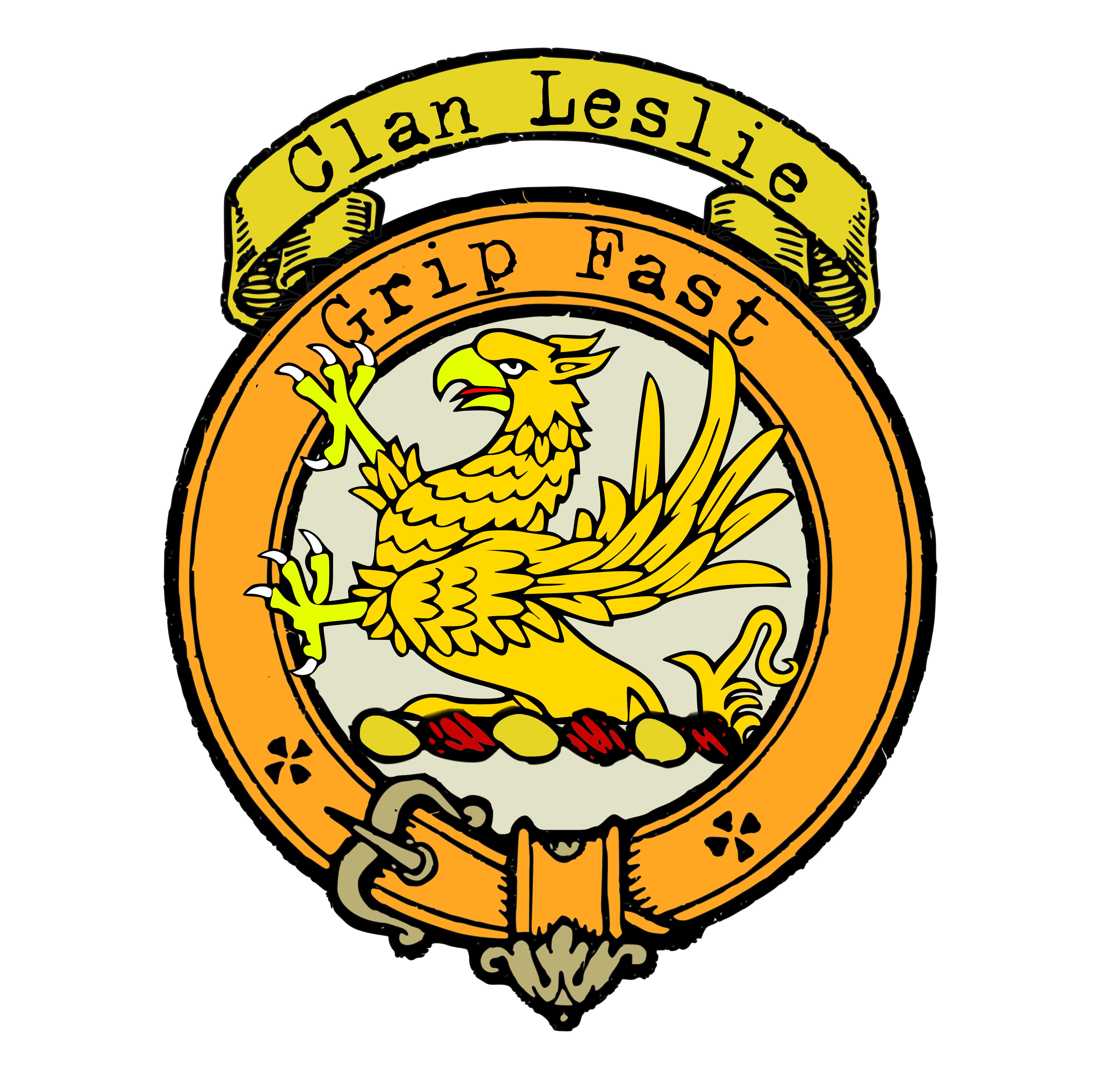Clan Leslie
|
|
CREST: A demi griffin Proper, beaked, armed and winged Or MOTTO: Grip fast |
 The progenitor of Clan Leslie, Bartolf, emerged as a Hungarian nobleman who embarked on a fateful journey to Scotland in 1067. Accompanying Edgar the Aetheling, brother of Queen Margaret and King Malcolm III, Bartolf displayed exceptional intellect and bravery. As a result, he was appointed as the governor of Edinburgh Castle and granted extensive estates across Fife, Angus, the Mearns, and Aberdeenshire. Legend has it that Bartolf saved Queen Margaret’s life during a perilous river crossing, a moment commemorated in the clan’s motto, “Grip fast,” and the inclusion of belt buckles on their shield. The progenitor of Clan Leslie, Bartolf, emerged as a Hungarian nobleman who embarked on a fateful journey to Scotland in 1067. Accompanying Edgar the Aetheling, brother of Queen Margaret and King Malcolm III, Bartolf displayed exceptional intellect and bravery. As a result, he was appointed as the governor of Edinburgh Castle and granted extensive estates across Fife, Angus, the Mearns, and Aberdeenshire. Legend has it that Bartolf saved Queen Margaret’s life during a perilous river crossing, a moment commemorated in the clan’s motto, “Grip fast,” and the inclusion of belt buckles on their shield.
Bartolf’s son, Malcolm, continued the family’s legacy and was appointed as the constable of the royal castle at Inverury. It was Malcolm’s great-grandson, Sir Norman Leslie, who acquired the lands of Fythkill in Fife, eventually leading to the adoption of the name Lesley. The Lesleys became a significant force in Scottish society, with their principal holding in the Garioch district of Aberdeen, where they constructed a castle at Lesselyn, later known as Lesley. Over time, the Lesley family expanded their influence, holding positions of prominence and acquiring additional lands. Clan Leslie’s involvement in Scottish politics was not without intrigue. The Lesleys played a crucial role in the marriage of Mary, Queen of Scots, to the heir of the French throne in 1558. However, tragedy struck when George, the fourth Earl of Rothes, met an untimely demise in Dieppe, amidst rumors of poisoning due to his refusal to settle the Scottish crown on the Dauphin. Despite these challenges, the Lesleys continued to contribute to Scotland’s political landscape, with notable members holding titles and serving in various governmental roles. During the tumultuous 17th century, many Scottish noble families turned to the profession of soldiery. Clan Leslie was no exception. The Lesley warriors found themselves embroiled in conflicts across Europe, fighting in Germany, France, Sweden, and the Baltic regions. One of the most renowned mercenaries was Alexander Leslie, later raised to the peerage as the Earl of Leven. He was instrumental in leading the Army of the Covenant during Scotland’s turbulent times. Through the centuries, Clan Leslie has weathered challenges and maintained its prominence. The family produced distinguished individuals who excelled in various fields, such as architecture, law, and heraldry. While the dukedom of Rothes came to an end, the earldom persevered through the female line, ensuring the continuation of the noble title. Today, Clan Leslie stands as a testament to the endurance of Scottish heritage and the significance of familial bonds. The Leslies’ ancestral seats, including Leslie House in Fife and Leslie Castle in Aberdeenshire, bear witness to the family’s glorious past. Though some have undergone restoration, they remain tangible reminders of Clan Leslie’s historic roots. Moreover, descendants of Clan Leslie diligently safeguard their rich heritage, ensuring that the legacy of their forebears lives on. |
|
Citations:
Purchase @ Redbubble
|
|


